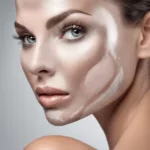8 December 2023
A GAO report reveals gaps in the implementation of the Modernization of Cosmetics Regulation Act (MoCRA) by the FDA, raising concerns about the safety of everyday cosmetic products.
When we think of cosmetics, we often envision makeup, but the term encompasses a wide range of everyday products, including shampoo, toothpaste, and body wash. While these products are designed to enhance our appearance and personal hygiene, there is growing concern about the potential health risks associated with some of their ingredients. From preservatives linked to endocrine problems to asbestos contamination, the safety of cosmetics is under scrutiny. Recognizing the need for oversight, the U.S. Government Accountability Office (GAO) conducted a report on the implementation of the Modernization of Cosmetics Regulation Act (MoCRA) by the U.S. Food and Drug Administration (FDA). The findings reveal gaps in the FDA’s efforts to fully implement the law, raising questions about the safety of the products we use on a daily basis.
The Complexity of Linking Ingredients to Health Effects
Cosmetics often contain ingredients that have the potential to cause harm, but establishing a direct link between these ingredients and negative health effects is challenging. Karen Howard, a Director of Science and Technology Assessment for the GAO, explains that it is difficult to prove causation when individuals use multiple products daily for many years. Pinpointing which exposure led to specific health issues becomes a complex task. The challenge lies in determining which ingredients pose a risk and whether the benefits of using these products outweigh the potential harm.
The Modernization of Cosmetics Regulation Act
In response to concerns about cosmetic safety, the MoCRA was passed in 2022, granting the FDA expanded regulatory authority. The goal of the act is to ensure that cosmetic products are safe for consumer use, even with certain ingredients. However, the recent GAO report reveals that the FDA has not fully implemented the necessary organizational changes to enforce the law effectively. While the FDA has designated its Chief Scientist to lead implementation efforts, key steps, such as developing a strategic workforce plan, have not been completed.
Ensuring the Safety of Cosmetic Products
The FDA plays a crucial role in determining the safety of cosmetic products. Its responsibility is to assess the risks and benefits associated with the ingredients used in these products. However, this task is complex and requires thorough scientific evaluation. It is essential for the FDA to make informed determinations about the risk-benefit balance of cosmetic ingredients to ensure consumer safety.
The Need for Strategic Workforce Planning
One of the major gaps identified in the GAO report is the FDA’s lack of a strategic workforce plan. This plan is crucial for the successful implementation of the MoCRA and the enforcement of cosmetic safety regulations. Without a well-defined workforce plan, the FDA may struggle to allocate resources effectively, hindering its ability to thoroughly evaluate the safety of cosmetic products. Developing a strategic workforce plan is imperative to ensure that the FDA has the necessary personnel and expertise to carry out its regulatory duties.
The FDA’s Response
In response to the GAO’s findings, the FDA acknowledges the need to complete the implementation steps outlined in the report. The agency agrees with the GAO’s recommendations and recognizes the importance of addressing the organizational changes necessary for effective enforcement of the MoCRA. By taking action to fulfill these recommendations, the FDA aims to strengthen its ability to ensure the safety of cosmetic products and protect consumers from potential harm.
Conclusion:
The GAO report sheds light on the gaps in the FDA’s implementation of the Modernization of Cosmetics Regulation Act, raising concerns about the safety of everyday cosmetic products. While it is challenging to establish a direct link between specific ingredients and health effects, it is crucial for the FDA to thoroughly evaluate the risks and benefits associated with cosmetic ingredients. Developing a strategic workforce plan is essential to ensure that the FDA has the necessary resources and expertise to carry out its regulatory duties effectively. By addressing the recommendations outlined in the report, the FDA can strengthen its oversight of cosmetic safety and provide consumers with the assurance they need when using everyday products.



